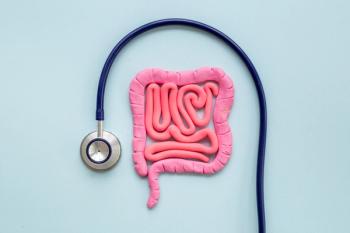
New sterile compounding guidelines on the way in Calif.
California board of pharamcy to adopt regs establishing standards for compounding injectable sterile drug products in pharmacies.
GOVERNMENT and LAW
New sterile compounding guidelines on the way in Calif.
If you compound sterile drugs in California, you need to become familiar with the new standards on sterile compounding that the state board of pharmacy expects to implement within the next six months. These rules apply whether you practice in community, home infusion, or hospital pharmacy. The legislation will require pharmacies that compound injectable sterile drug products to obtain a separate license from the California Board of Pharmacy and to comply with sterile compounding guidelines.
Paul Riches, the California board's legislative analyst, told Drug Topics that the guidelines are a result of legislation drawn up in California last year following the deaths of three patients and the hospitalization of several others in Walnut Creek from a compounded epidural containing betamethasone, used to treat severe back pain.
Before pharmacists can obtain a separate license for compounding sterile injectable drugs, the pharmacy has to be inspected by the board. It must be inspected every year and found compliant before its license is renewed. "There's a new, high level of ongoing scrutiny. This is the first time we tied an inspection and explicit standards into getting and keeping a license," Riches pointed out. "These are very significant standards. They also become the benchmark for obtaining licensure to perform this activity at all."
Noting that the proposed regulations are culled from existing national regulations put in place by ASHP, U.S. Pharmacopeia, and the American Society for Parenteral & Enteral Nutrition, Riches said, "Our regulations are the first I've seen that divide sterile compounding into different risk categories and set different standards depending on the risk category of the drug being compounded."
An example of a category 1 or low-risk sterile preparation is an IV admixtureone in which two manufactured sterile products have been combined. The highest-risk level, category 3, includes preparations compounded from nonsterile ingredients.
"The new standards have much stronger facility guidelines and requirements than existing California regulations," Riches said. "The recognition that there are different levels of risk with different kinds of compounding is really important and gives people comfort that when they are receiving a product that is more dangerous to produce, they are getting a higher level of scrutiny of that process."
The new guidelines also have requirements related to plant and facilities, Riches said. "For category 3, there is a requirement that the work done in a laminar air flow hood has to be situated in an actual clean room environment that meets the federal standards," he explained.
The board has also proposed extensive training and process validation requirements. "You have to have a documented training program for all the personnel, with pharmacists and techs involved in compounding," said Riches. "And you have to validate your compounding processes."
A couple of other notable places where the new guidelines deviate from national guidelines have to do with the fact that the board is incorporating a consideration of how the drug is administered into categorizing it for risk purposes.
For example, Riches explained, an ophthalmic drug is prepared in a sterile environment, but as soon as it is administered, it is on the surface of the eye, which is not sterile. "It needs to be sterile, but it's not hugely dangerous if there's some contamination in there. That would be categorized as a level 1 whether you started with a sterile or a nonsterile ingredient, just because it's not as risky a use of that product. On the other hand, with the Medtronic pumps for back pain and cancer pain, there is a very risky route of administration, and that has been characterized as the highest level of riska category 3just because of the way the drug is administered.
Will these guidelines be adopted by other states?
Ken Speidel, Pharm.D., executive director of Ritzman Infusion Services/Summas's Home Infusion, Akron, Ohio, said, "If these [guidelines] make their way into other states, I really would question how a small independent doing sterile compounding on a very small scale would be able to do it and reasonably price the end product, as well as having to reengineer a lot of these hospital pharmacies that are probably not compliant."
Voting by the California board of pharmacy on the new regulations is slated for October. If approved, the rules are expected to take effect in February or March of 2003. For more information about the regulations, visit
Sandra Levy
Sandra Levy. New sterile compounding guidelines on the way in Calif..
Drug Topics
2002;18:58.
Newsletter
Pharmacy practice is always changing. Stay ahead of the curve with the Drug Topics newsletter and get the latest drug information, industry trends, and patient care tips.















































































































